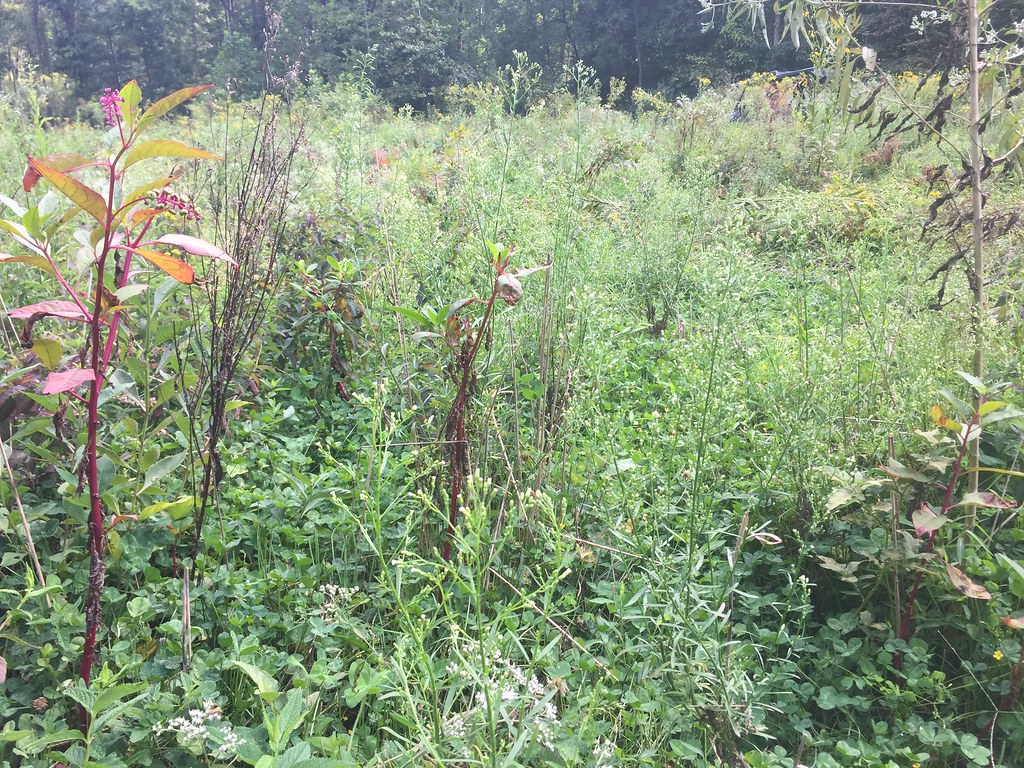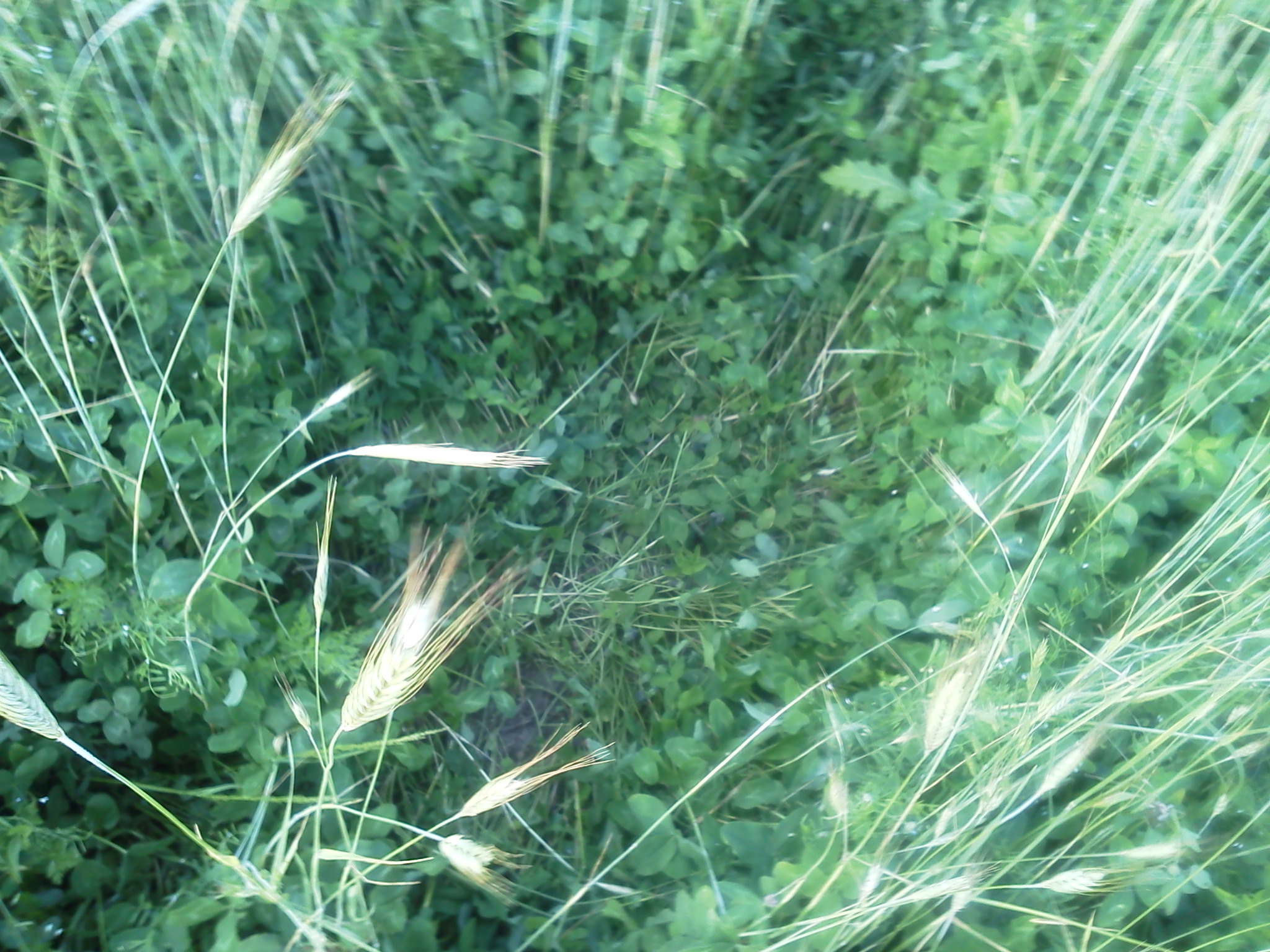You are using an out of date browser. It may not display this or other websites correctly.
You should upgrade or use an alternative browser.
You should upgrade or use an alternative browser.
Clover and Rye
- Thread starter birdog
- Start date
Smallplot
5 year old buck +
If your going to mow it off then the best time to mow is just as the Rye is starting to send up the flag leaf. This is where the seed head will form and terminating before the seed pod forms will keep you from having volunteer plants. If you are ok with more rye growing this fall then wait until the seed head is formed and dried. This way your mowing will help scatter the seed.
Sent from my iPhone using Tapatalk
Sent from my iPhone using Tapatalk
yoderjac
5 year old buck +
I over seeded rye in an existing clover plot last September to hopefully help with weed control this year. I frost seeded a clover/chicory mix in same plot a few weeks ago. How long should I let the rye go before I mow? I'm in west central Illinois.
It depends on how thick it is. In general, I like to wait until it is about a foot or so tall and then mow back to 6" to 8" depending on the type of clover.
Bowman
5 year old buck +
Care to elaborate on the clover?It depends on how thick it is. In general, I like to wait until it is about a foot or so tall and then mow back to 6" to 8" depending on the type of clover.
yoderjac
5 year old buck +
Care to elaborate on the clover?
Think of it as fall planted clover plot with a WR nurse crop. The WR will germinate immediately and can grow in much colder temps than the clover. Much of the clover germinates in the fall, but depending on conditions you might not get much growth. In the case of fall overseeding with WR and frost seeding clover, you have a similar situation except you have some established clover in the field.
With a new fall planted clover mowing the first spring is even more important since you don't have any established clover in the field. The clover take off in the spring and so does the WR. Perennial clover is slow to establish. Some varieties, like Durana, is slower than others. The newly seeded clover is spending most of its energy establishing a root system that first summer. The WR quickly becomes unpalatable to deer but it takes up space that summer weeds would otherwise occupy and has a chemical effect on some weed seed reducing germination rates. If the WR stand is thick and you let it get too big, it shades out the young clover retarding its growth. If you don't have a nurse crop of WR, the clover is competing with weeds and since some weeds are perennial (unlike WR) they are always competing with them.
So, the objective of mowing in the spring is to release the clover from the shading of the winter rye without killing the rye. This gives the clover time to establish. Eventually, the WR will die on its own and the established clover will fill in.
When I plant a fall mix, it may contain other seed other than just the clover and WR. Depending on what I'm trying to accomplish I may include GHR or some other component. I reduce the amount of WR in the mix when I do this. The nurse crop of WR can be seeded at anywhere between about 50 and 100 lbs/ac. This seeding rate impacts how much the WR shades out the clover in the spring.
If the amount of WR is low enough, you can even let the WR head out without mowing. This approach has less weed combatting capability than broadcasting higher rates of WR and mowing on a timely basis. Different locations and situations may need more or less weed control than others.
So, when I say "each time the WR hits a foot or so mow it back to 6 to 8 inches", it is a generalization assuming a heavy WR seeding rate. In my area, lower growing clovers fit well. Ladino is less expensive but is not as persistent or drought resistant as Durana. You don't want to stress the clover while it is establishing. Mowing too low, especially in dry conditions will stress it. With ladino I don't like to get much lower than 8". Rain may be in the forecast but it doesn't always come as expected. Durana is a bit more tolerant and if I have rain the forecast I'll mow it to 6". There are other clovers that are taller growing than these. You may want to mow even higher for those. What you are really looking for is to make sure the clover gets sufficient sun without advantaging weeds.
Thanks,
Jack
Last edited:
Last few years I've not done anything with mine until I was ready to seed again around Labor Day. This year I plan on a summer mowing once the WR seed has set as the late summer weeds get a bit too much out of control.
Looked like this in May:
 Untitled by Tyler Staggs, on Flickr
Untitled by Tyler Staggs, on Flickr
 Untitled by Tyler Staggs, on Flickr
Untitled by Tyler Staggs, on Flickr
Then this by September
 Untitled by Tyler Staggs, on Flickr
Untitled by Tyler Staggs, on Flickr
 Untitled by Tyler Staggs, on Flickr
Untitled by Tyler Staggs, on Flickr
Looked like this in May:
 Untitled by Tyler Staggs, on Flickr
Untitled by Tyler Staggs, on Flickr Untitled by Tyler Staggs, on Flickr
Untitled by Tyler Staggs, on FlickrThen this by September
 Untitled by Tyler Staggs, on Flickr
Untitled by Tyler Staggs, on Flickr Untitled by Tyler Staggs, on Flickr
Untitled by Tyler Staggs, on Flickryoderjac
5 year old buck +
Jack are you saying if I mow the WR at a "foot or so" down to 6-8 inches the WR will continue to grow?
Yes. It will continue to grow until it dies naturally. Mowing will not kill it.
yoderjac
5 year old buck +
So if you want to terminate WR you have to keep it from going to seed by mowing? I reckon you just keep mowing until it dies naturally?
Yes, you want to keep it going until it dies naturally in the summer. When it begins to shade out the clover, you mow it back. It keeps growing and over time the clover fills in more and more. In my area, I use Durana clover because of the drought tolerance and persistence. However, it is slower to establish than most clovers. The key to establishing it is timely mowing that first spring. By the time the winter rye dies on its own, the clover will have filled in nicely.
Thanks,
Jack
Tap
5 year old buck +
That's what I do with my rye, too. Except I'm not working with dry soil unless we have a severe drought. But I rarely mow my clover because the deer and turkey keep it mowed for me. I occasionally run a mower set very high if weeds need clipped, but I usually keep the mower set above clover height.Unless the rye comes in super super thick (which mine never does in this situation) I just let it mature and fall over. Then repeat the overseeding process again August-September. I'm working on dry sand so I typically don't mow my clover plots.
A sure-fire way to induce a dry spell is for me to mow my clover! Pretty much the same for planting! They can be predicting the perfect rain event coming my way...soon as I seed or spread urea, the skies part, and the rain doesn't come! I'd hate to depend on farming to make a living.
Bowman
5 year old buck +
Joke: Maybe you should wash you vehicle. No joke: This past summer was another curve ball for me. Really cool, with many nights in the 40's. I am still snowed in and wonder how this year will be. A sudangrass screen only grew to 2'. And that was with some nitrogen at planting. If the snow ever goes away, i will be curious the see how my rye and clovers do. I had a nice carpet, but it got mowed down to dirt.
Similar threads
- Replies
- 12
- Views
- 585
